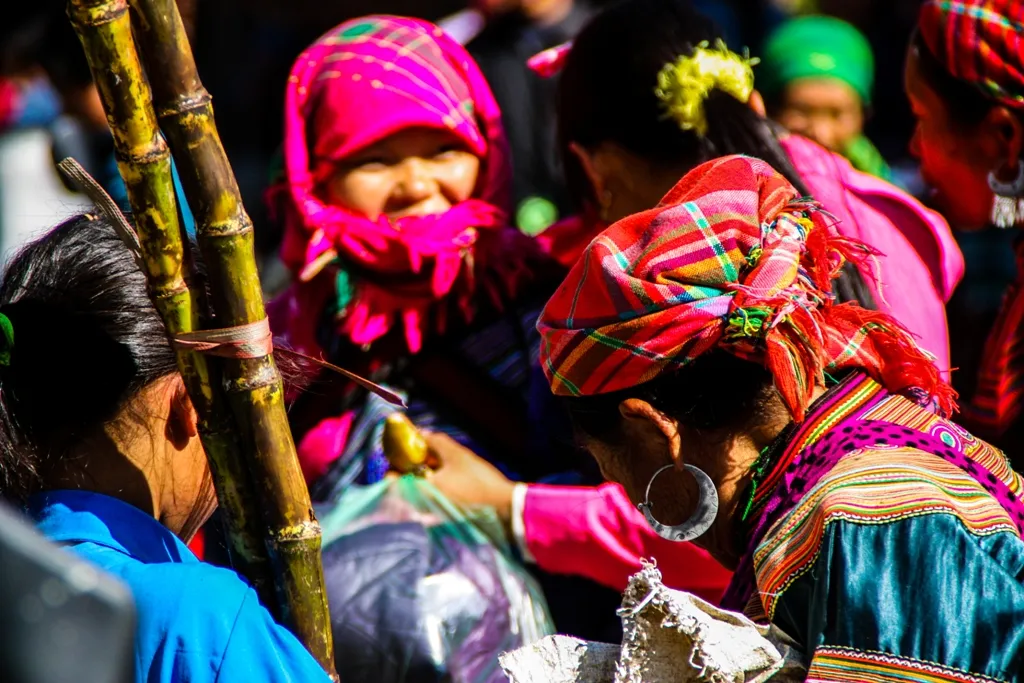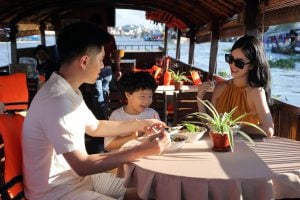Vietnam’s north, as it fans out towards China and Laos, offers some of the country’s most stunning scenery, completely different from the lush, low-lying Mekong Delta or the long stretches of sand and sea up and down the coast.
Known as the Roof of Indochina, Mount Fansipan is the tallest in the region, located near the city of Lao Cai bordering China, overlooking the former French hill station of Sapa.
The surrounding hills are sparsely populated, with little infrastructure and harsh, mountainous terrain. It’s also where many ethnic minorities call home, sometimes collectively known as “Montagnards” from the French montagne, meaning “mountain”.
On a sunny morning, we make our way from Sapa to visit one of these mountain markets for a chance to interact with these resilient, beautiful people.
Because homes and villages are so spread apart, market day is an important event. Coming only once a week, market days are organized in different locations throughout the week.
Today is Wednesday, and we’re headed to the town of Cao Son. Literally “high mountain” in Vietnamese, Cao Son is an appropriate name for the town about 85 km due north of Lao Cai.
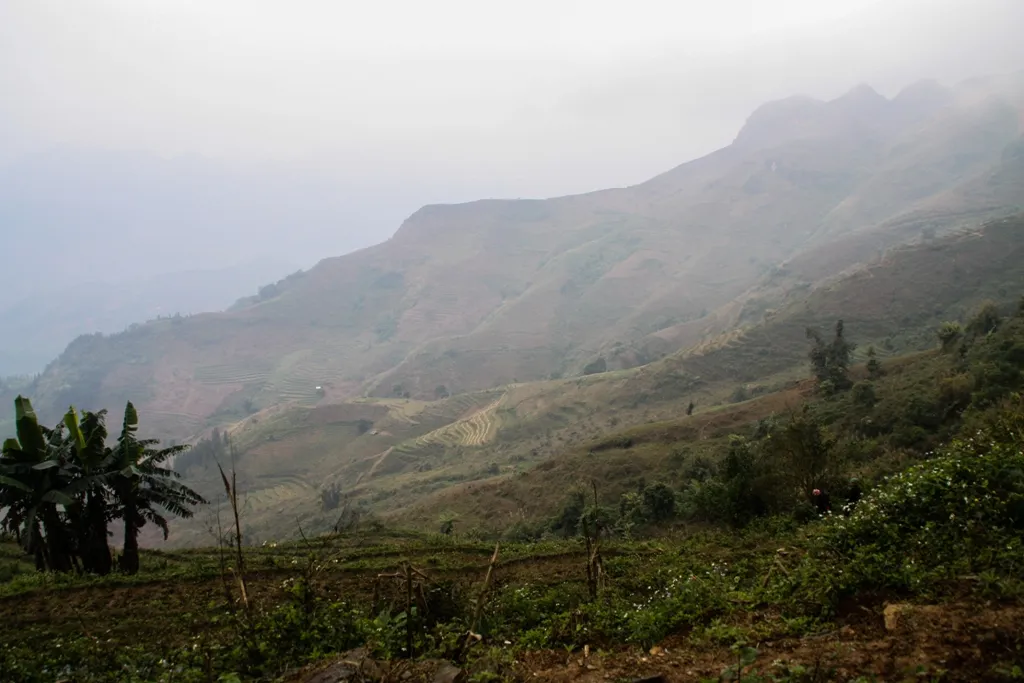
The drive up reminds us of the saying that ‘sometimes the journey is the destination’, as we climb higher and higher into the sea of mountains, passing remote homes along the way, and people making their way to the market, some on bicycles, some on motorbikes and some on foot.
The scenery is at once beautiful, with the occasional terraced fields, and forbidding, as life in these remote areas is often difficult, without the conveniences we often take for granted.
We finally arrive at the Cao Son Market, home to the Flower Hmong (Red Hmong), Phu La and Black Dao from the surrounding areas.
The market is laid out along a single stretch of road. We park our car at one end and jump into the fray.
The first thing we notice is stacks and stacks of sugar cane, long poles reaching for the sky.
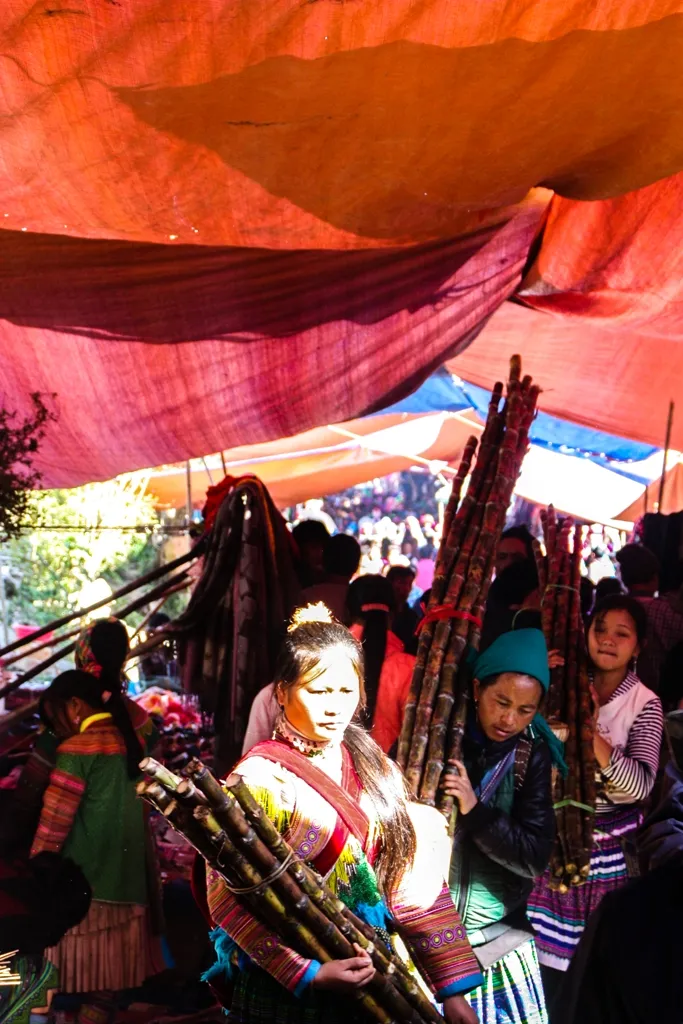
As people buy them, they’re chopped down into more manageable pieces and strung into bundles.
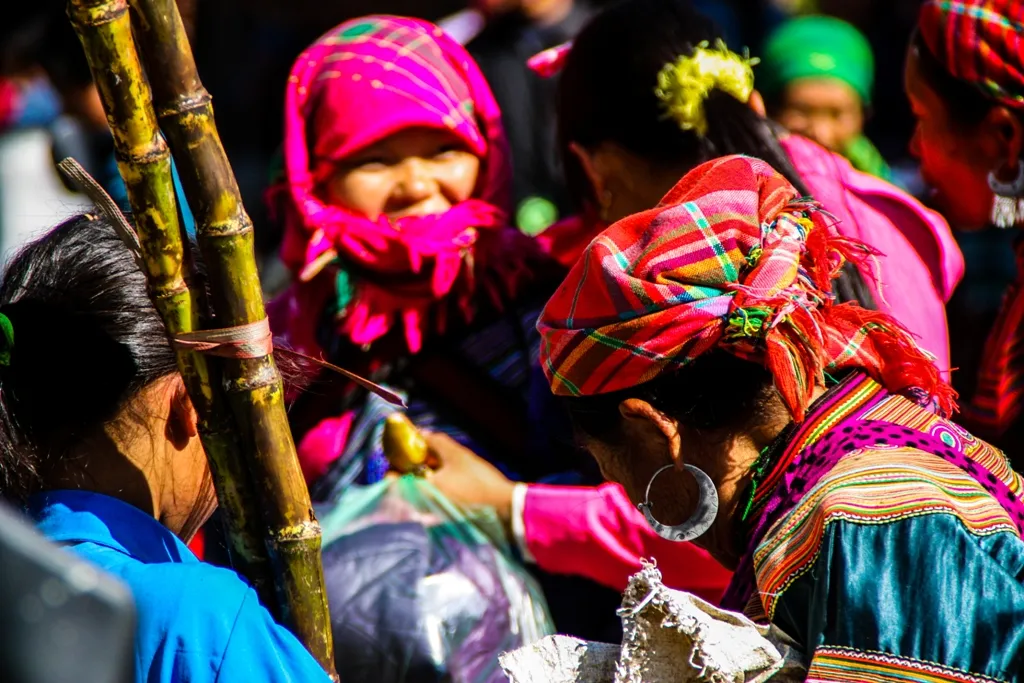
The market is a very real, living market, where all types of services are available, including haircuts, as long as you don’t mind getting one in full view!
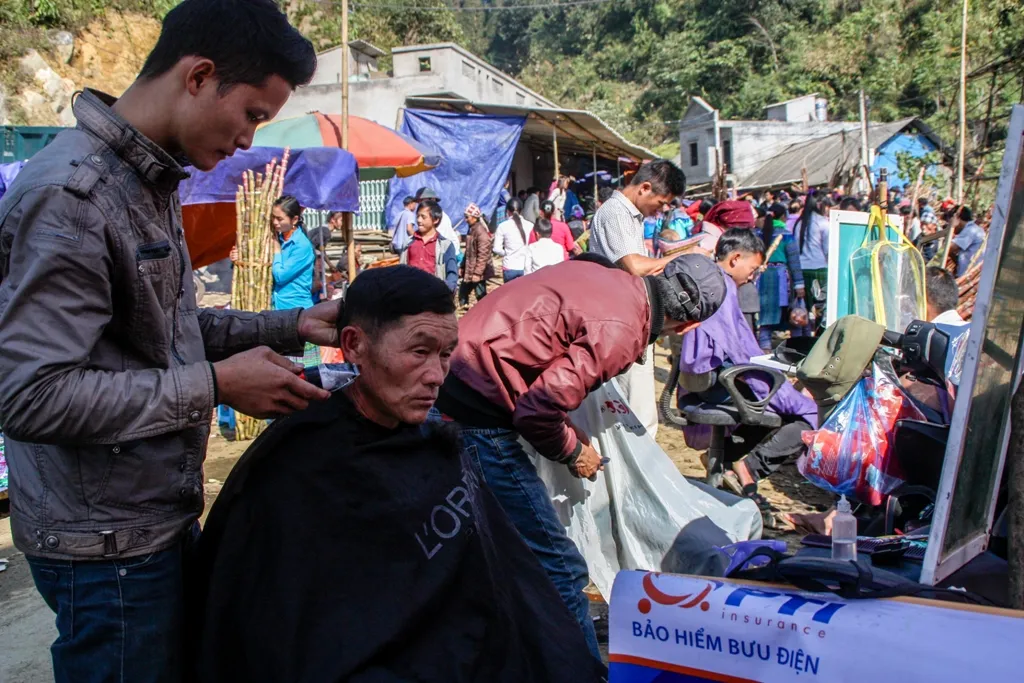
The market is roughly divided into sections, including farming tools, animals and produce.
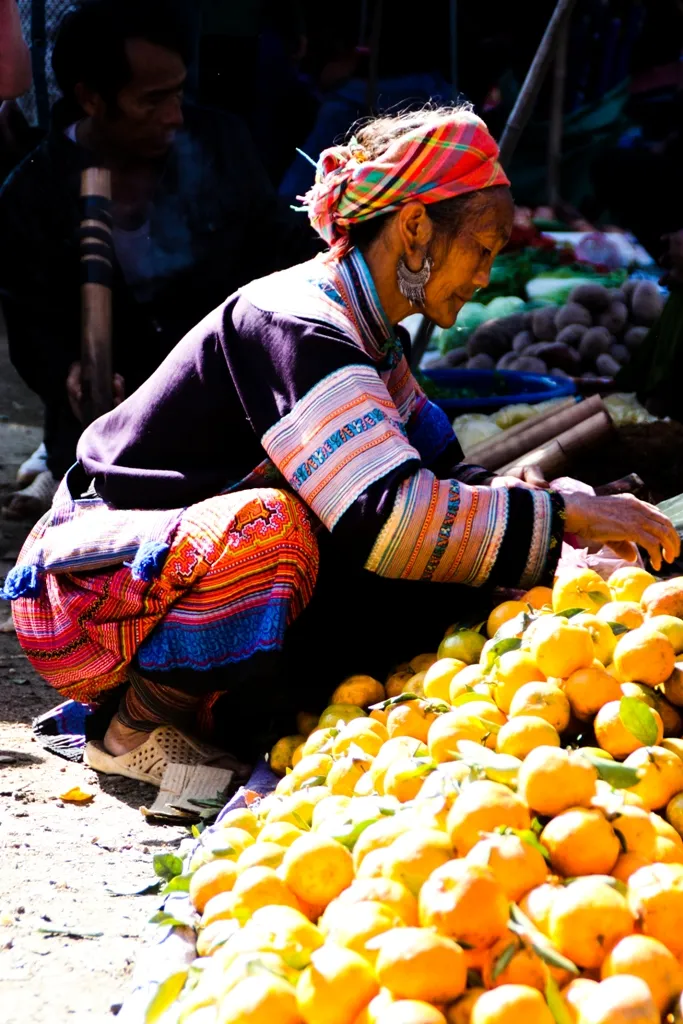
Even the simplest things, like brooms made from reeds and flowering plants, are beautiful in their simplicity.
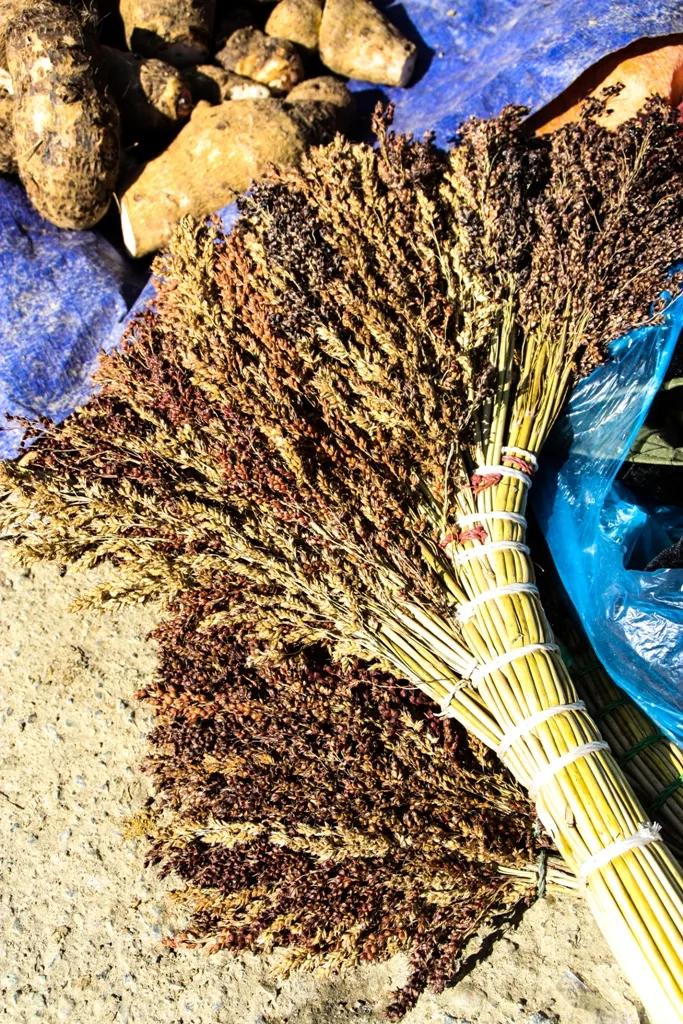
Some women come equipped with a “shopping bag” slung over their backs, a beautifully woven “backpack” that’s used in everyday life to carry things around.
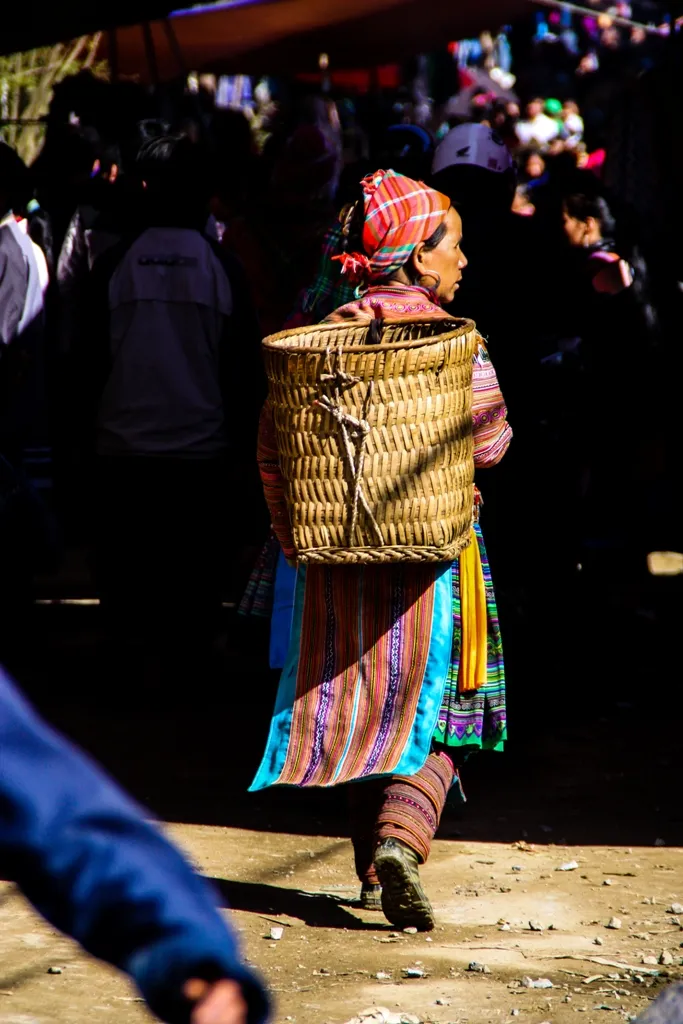
For those staying in Sapa, it’s easy to think the ethnic women dress up for tourists. But at the Cao Son Market, it’s evident that they dress in local garb even when no tourists are around. The women don their finest and most colorful for their trip to the market.
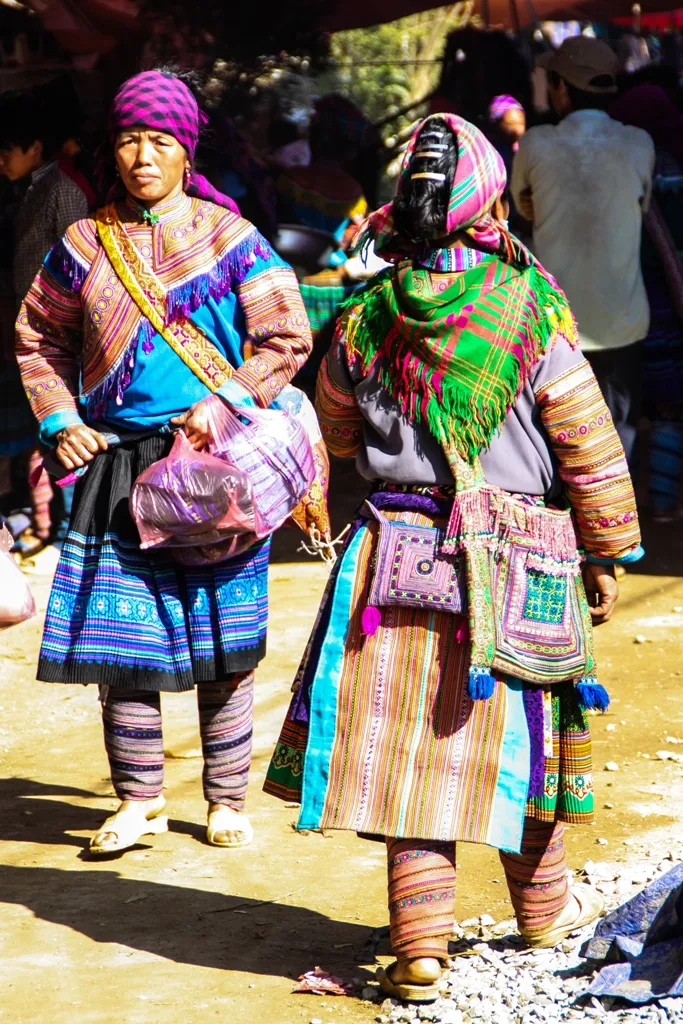
And it’s actually the many, many clothing displays which tend to draw the biggest crowds.
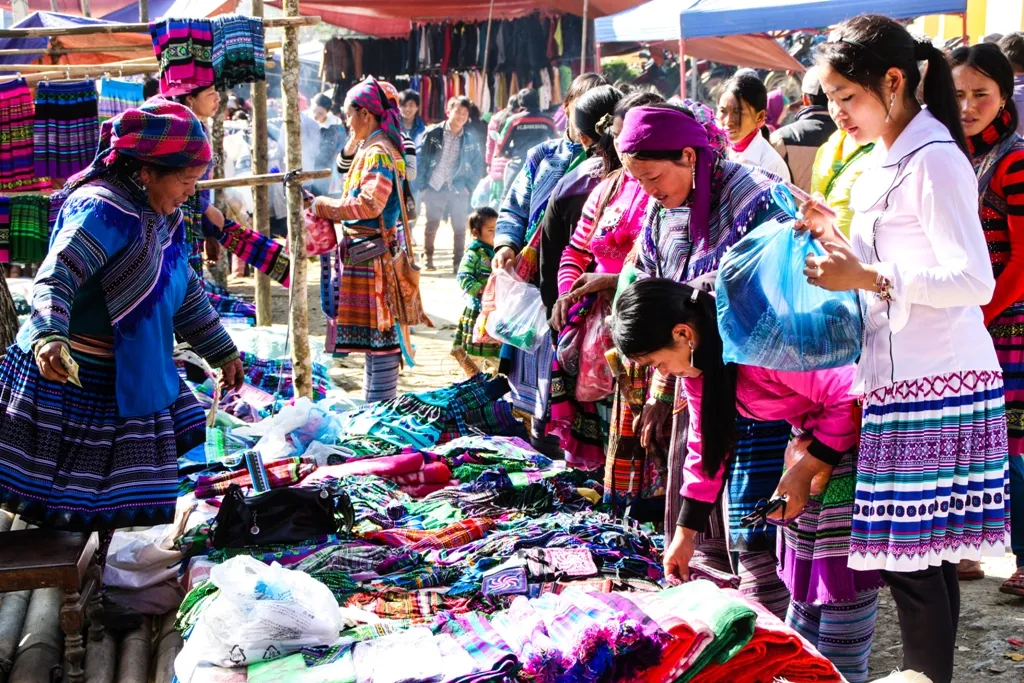
There’s everything from cheaper printed fabrics to hand-embroidered and beaded garments.
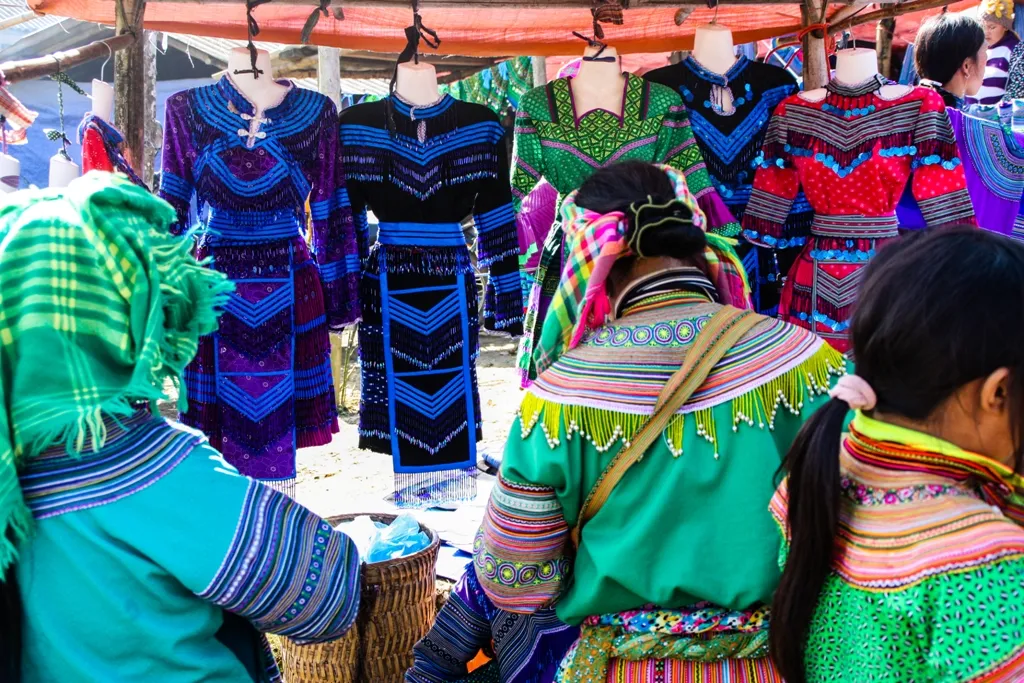
And even the little ones can get dressed to the nines.
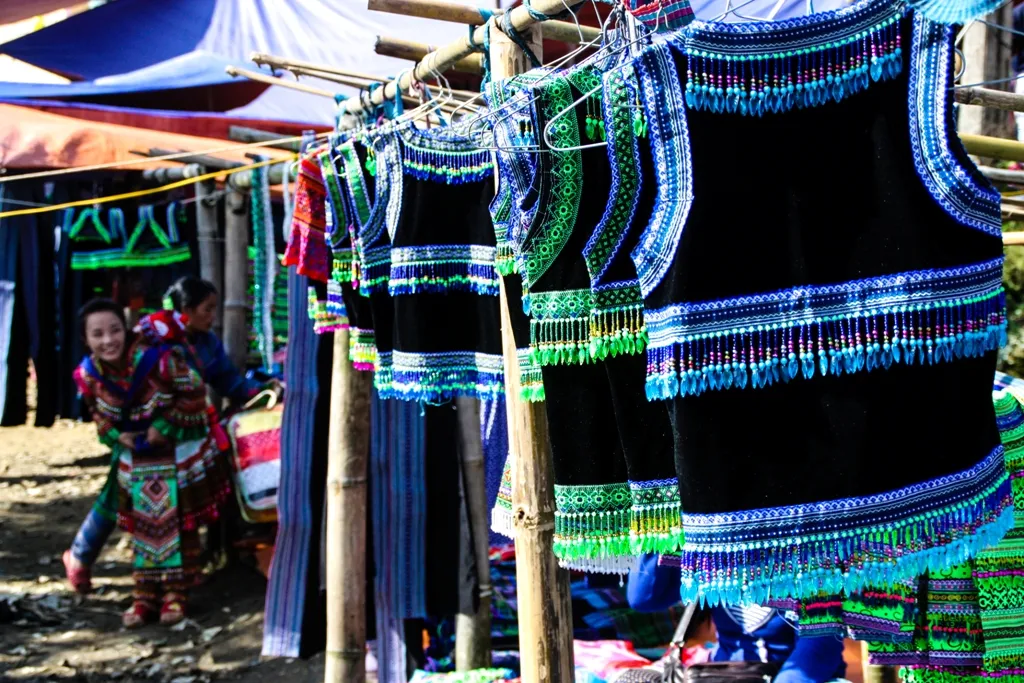
In fact, everywhere we look, we see the most adorable babies in slings on their mother’s back…
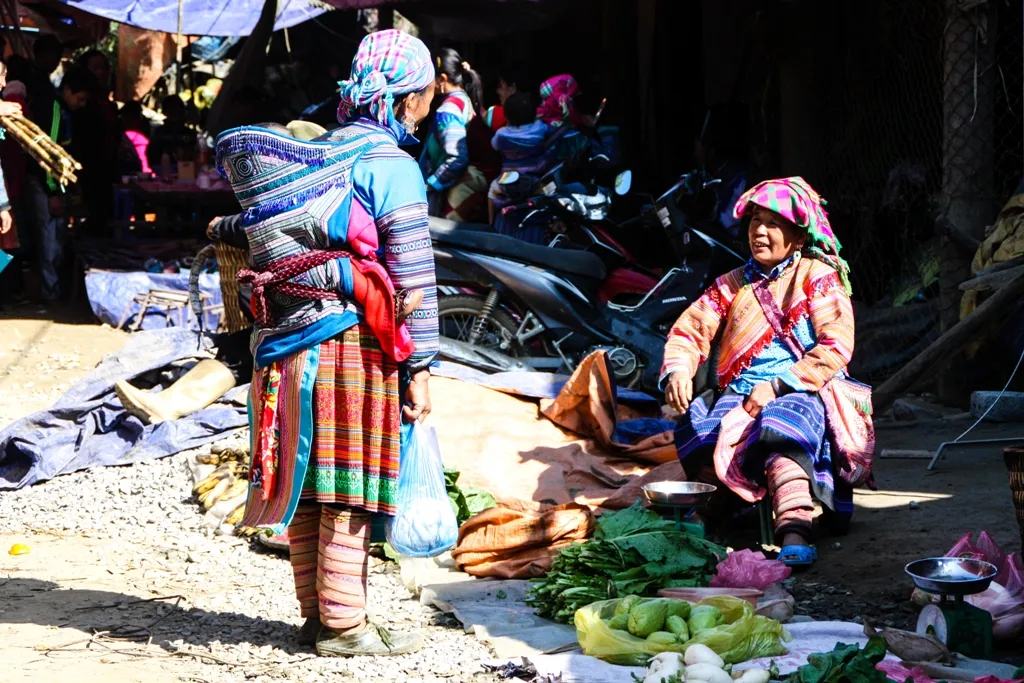
All bundled up against the autumn chill…
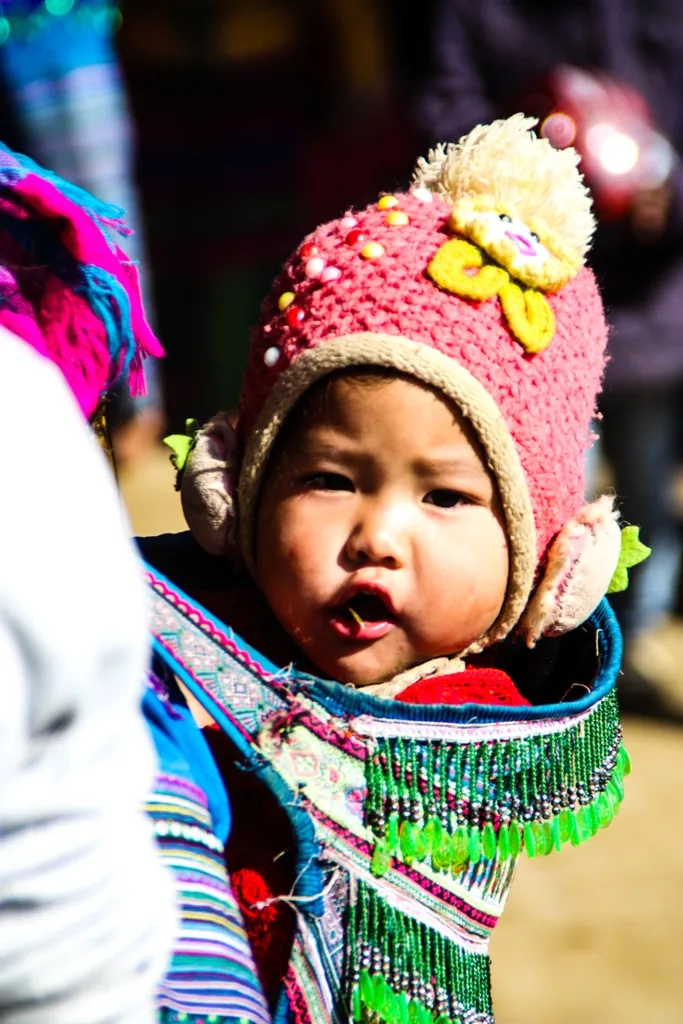
… with the cutest little handknit caps…
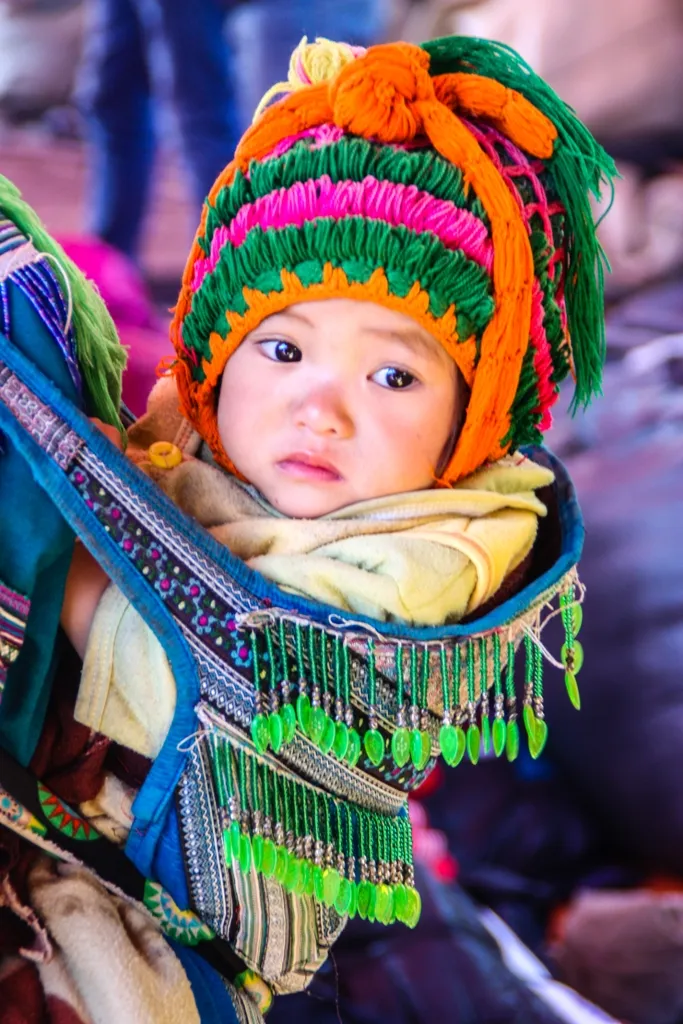
… heads just peeking up, big eyes taking in all the commotion…
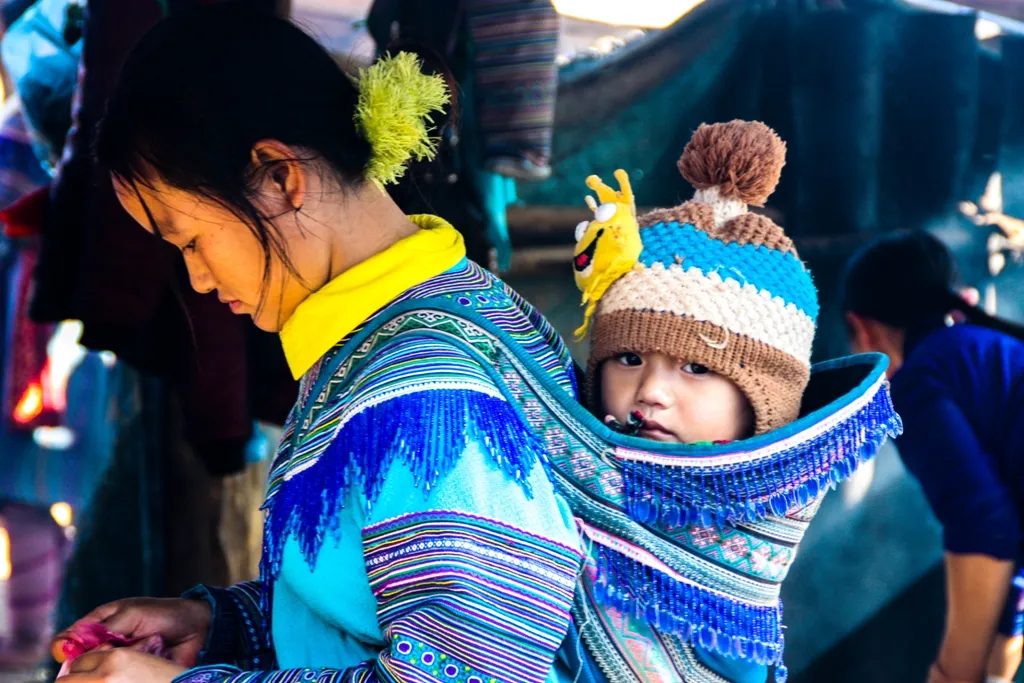
And when a bunch are lined up in a row, it’s almost too much cuteness to bear!
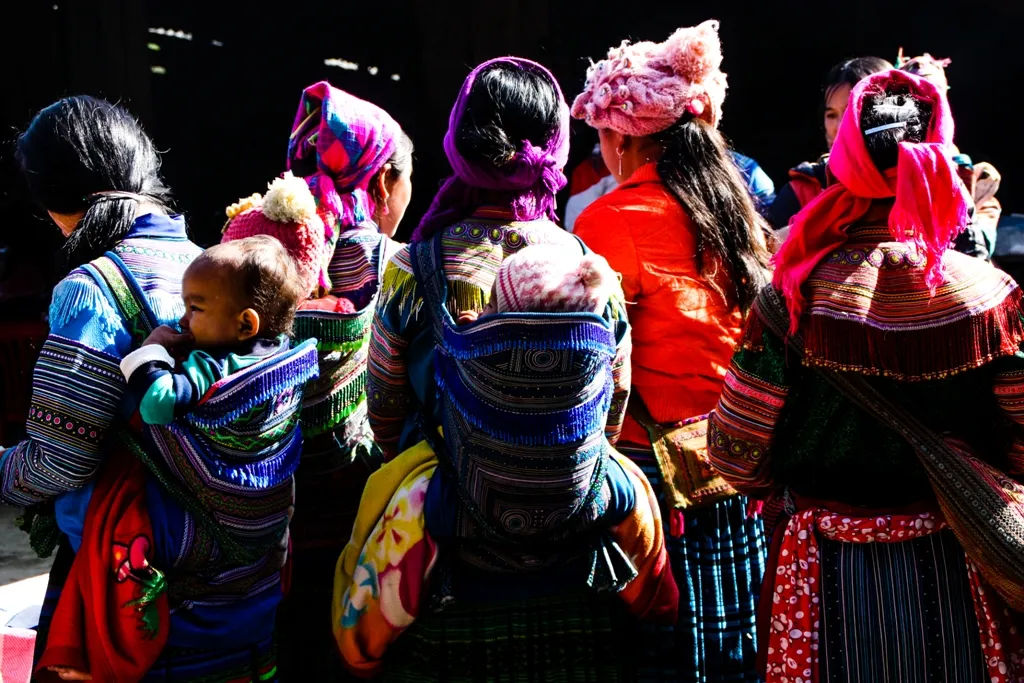
There’s also a very simple food area in the market with a few wooden tables set up and one-dish stalls to serve hungry shoppers.
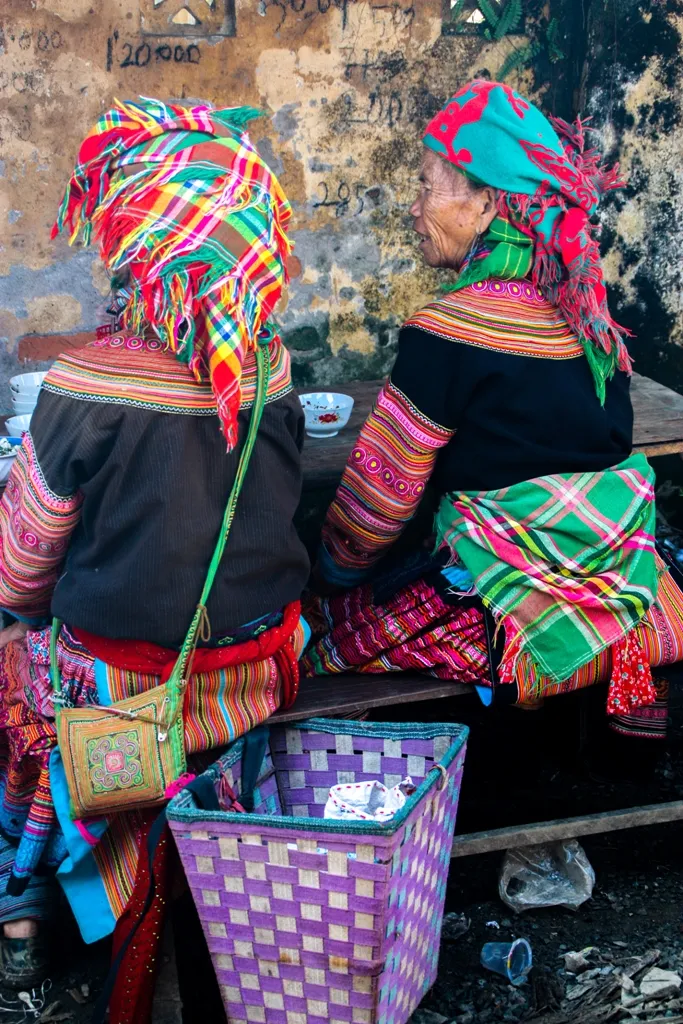
Every now and then, you’ll also get a waft of something on the grill as you walk through the market…
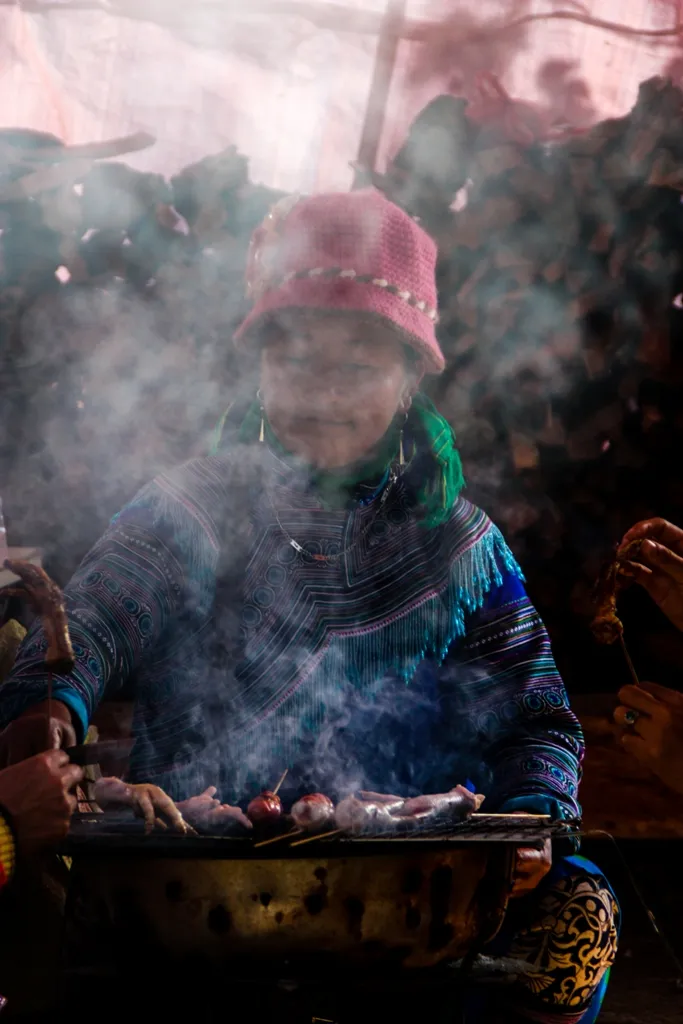
As much as the market is for buying and selling, it’s a weekly chance to catch up with old friends.
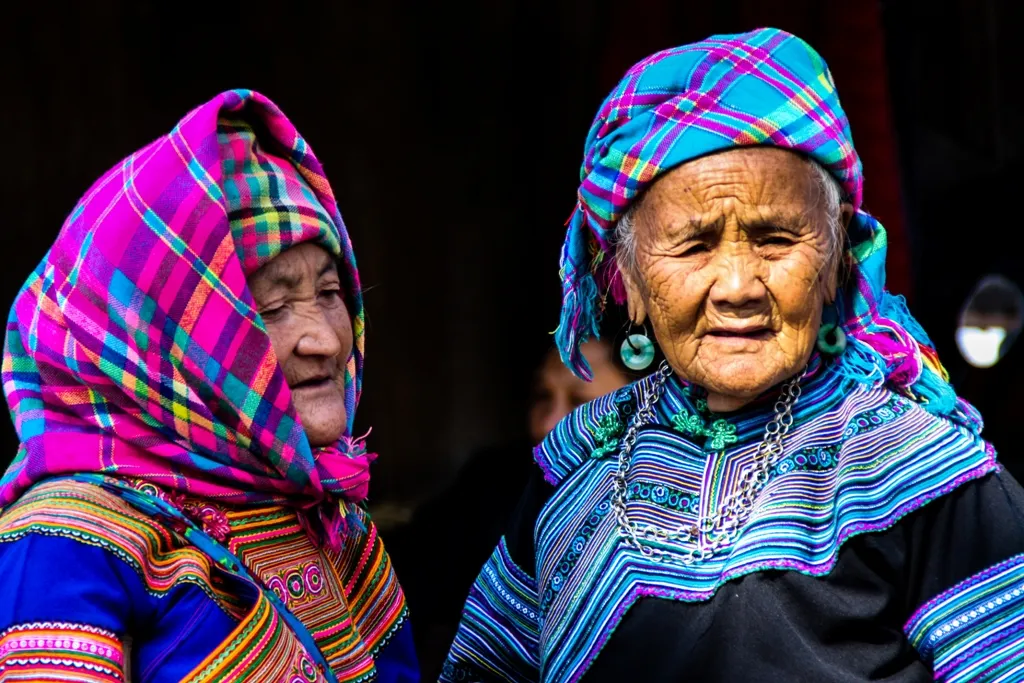
And do some people-watching!
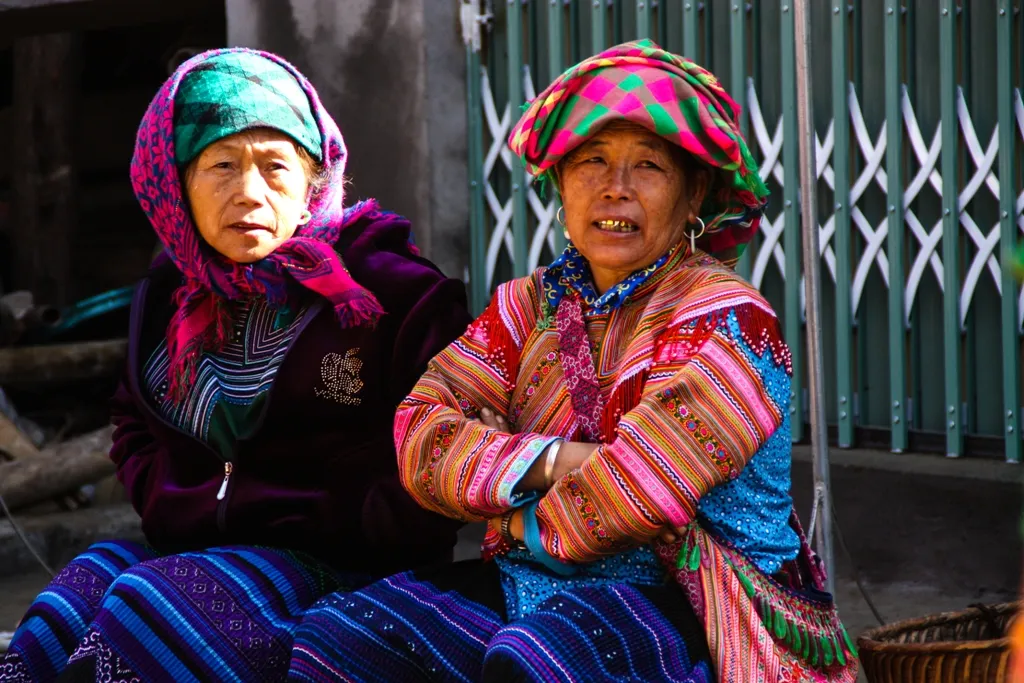
While some tourists do come up to the weekly markets, especially in the early hours after arriving in Lao Cai, we arrived at just past 9 in the morning and for the next few hours, saw only one other camera-toting tourist there.
The Cao Son Market is still an incredibly authentic experience (no souvenirs or tourist-trap items for sale as there are relatively few tourists who come) and a great way to spend a couple of hours just watching the market unfold.
Photography tips: The market can get crowded as everything takes place in one narrow street. Try doing one walk through the market first to get your bearings. The locals don’t seem to mind having their photo taken, but a zoom lens will allow you to discreetly position yourself so as to get candid shots.
This will also help because the market is bustling and very few people are sitting still, except for the occasional vendor. Get all your settings ready so you’ll be able to get off some quick shots once the opportunity presents itself. If you’re looking for portrait shots, you’ll need some patience while waiting for the perfect angle.
Also, the tarpaulins overhead create a frustrating balance of bright sunlight and shadow. If you position yourself on either end of the market, you’ll be able to catch people coming out from the shadows into full sunlight instead of having to continually adjust your lighting settings.
